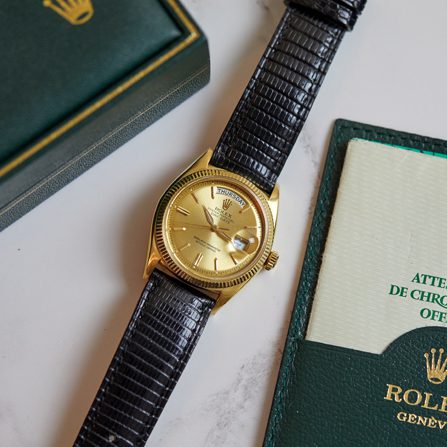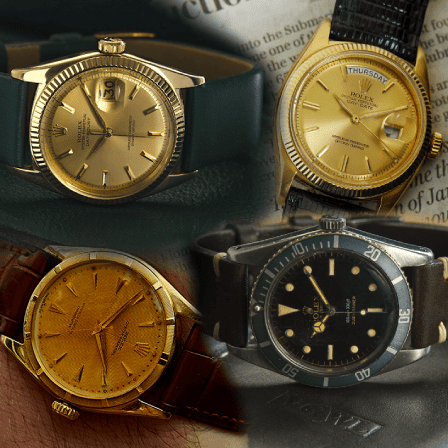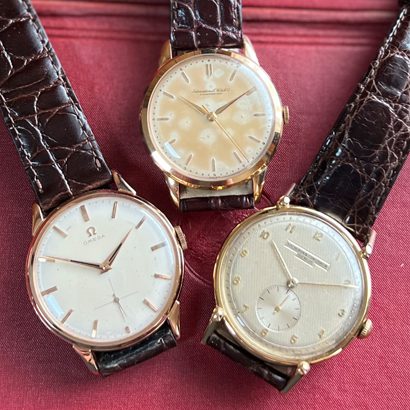HOW TO INVEST
IN VINTAGE WATCHES
Is it the right time to invest in vintage watches?
Without a doubt, there has never been a more opportune moment to consider investing in vintage watches. The flourishing luxury second-hand watch market has witnessed remarkable growth, surpassing all previous records.
In recent years, notable transformations have unfolded within the market. The presence of more speculators has led to an increased availability of watches, resulting in a significantly higher growth rate compared to the BNIB watch market. Furthermore, the vintage watch sector has exhibited remarkable resilience, as its value has remained largely unaffected by the post-pandemic downturn.
McKinsey & Company conducted a study revealing that the luxury watch market is not expected to experience any significant growth in the coming years. In contrast, the certified pre-owned watch market is projected to soar from its retail value of $19 billion in 2019 to over $30 billion by 2025. Considering the volatility experienced by numerous markets since the onset of the Covid pandemic, investing in vintage watches emerges as a robust and reliable bet, side hustle, hobby, call it what you will.
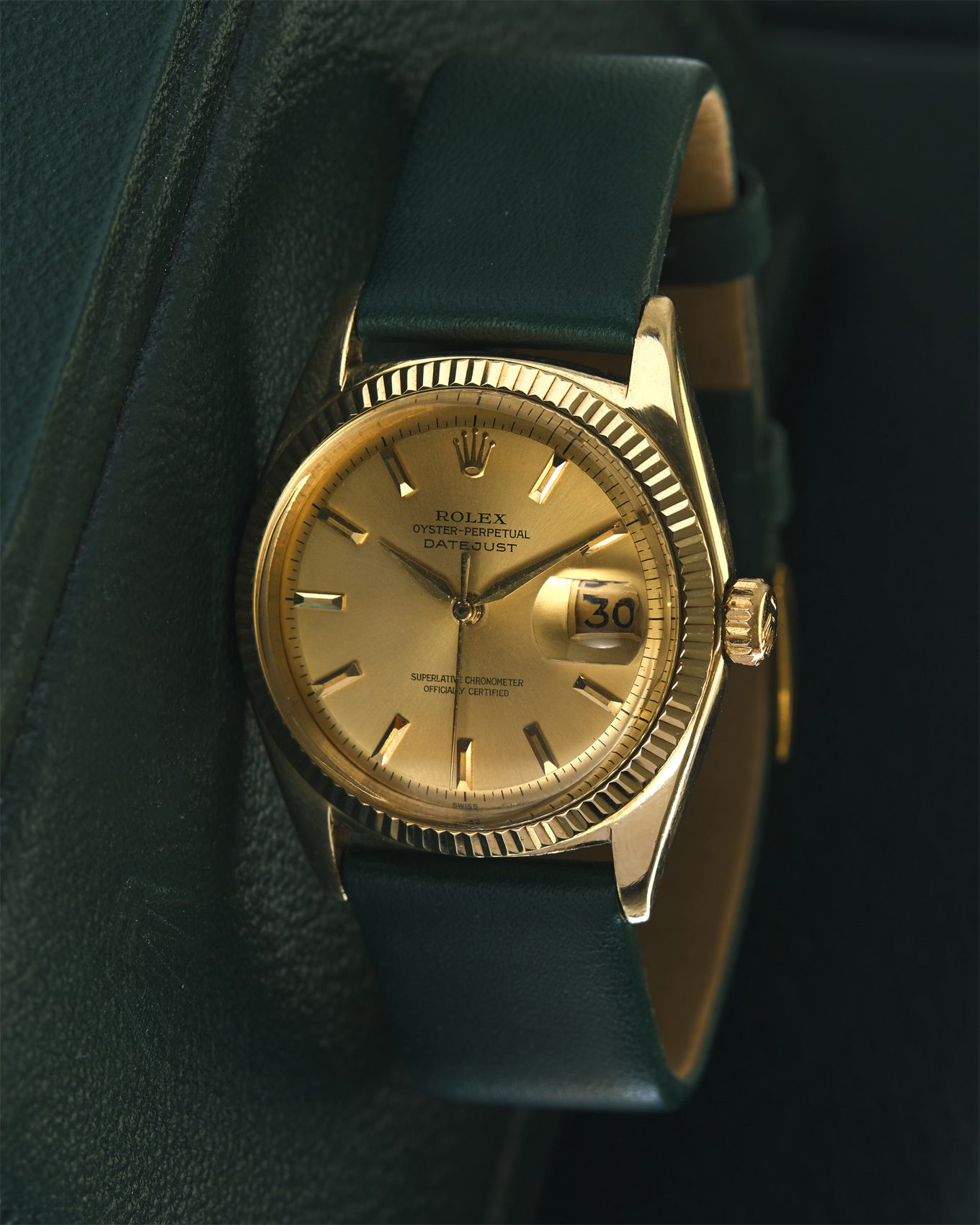
Collect or invest?
Vintage watch dealers and industry experts emphasise a notable shift in customer behaviour: in present times, customers are more inclined to resell their watches and capitalise on their collections compared to those of previous decades. This fluidity has resulted in a heightened volume of watch transactions within the market.
In earlier generations, watch collecting was primarily driven by a genuine passion, with individuals working towards completing a lifelong collection. The idea of reselling a watch was almost anathema, as it could potentially convey a negative message, thereby diminishing its value and undermining market confidence. However, the recent influx of speculation has overridden much of the emotional aspect of watch buying, rather like it has done in the art market.
The question prospective buyers of luxury pre-owned vintage watches should ask themselves is: are you motivated by collecting or investing? It’s crucial to carefully consider this question, taking into account your expectations and how you may perceive your choices in the next 10 or 20 years.
There are three primary types of collectors:
- The investment collector: This kind of collector has emerged recently and has gained prominence over the last decade or so.
- The purist collector: This type of collector is driven almost entirely by their passion for watches.
- The investment and passion collector: This type of collector encompasses the majority of collectors today.
It’s important to note that using the terms “investing” and “collecting” interchangeably can be misleading. True collectors prioritise factors such as scholarship, provenance, appreciation, rarity, and understanding of their cherished timepieces, with the watch’s monetary value being of secondary importance.
On the other hand, investors perceive the watch’s value on any given day as the ultimate bottom line. These distinct perspectives shape different approaches to vintage watch acquisition.
Take time to reflect upon what type of vintage watch collector you want to be as it will influence your motivations and aspirations. Once you have identified your purpose, establish clear objectives and remind yourself of them with each watch you buy, sell, or even research and desire.
Why invest in vintage watches?
Suppose you’ve got £4,000 to spend on a watch. You could pick up a brand new Longines watch from their Masters collection that will be beautiful, on trend and accurate. Or, you could take your £4k and buy yourself a vintage watch. But what’s the difference?
It all depends on your ‘why’. The new Longines watch will no doubt be a practical watch that you wear every day providing you with accurate time. It will probably hold its value over the coming decades once it has overcome its initial depreciation curve (most new luxury watches will depreciate for 5 – 10 years after purchase before they start to appreciate). From a practical point of view the watch is more likely to be fully waterproof in a thunderstorm.
With a vintage watch it’s different, you are buying something totally unique. While there may be others like it, there will be no other watch in the world that is quite the same. You are buying a piece of history and with that comes its own special story, or what collectors like to call provenance. You probably won’t wear it every day but you’ll wear it for special events and it will draw admiring gazes and start conversations whenever it’s on your wrist. It will keep its time, maybe not quite so well as a new watch – but we are talking seconds here not minutes in difference.
Unlike the new watch, its depreciation curve is already spent, and now it’s likely to start to appreciate. As for taking your vintage watch into a thunderstorm, well, that’s only for the brave, or dare we say, foolhardy. Why so? Both a screw-down crown or a case back generate the necessary pressure to seal a watch, but both of them still require a seal. These seals – known as gaskets – are small rubber rings that adjust and close any gaps between the inside and outside of a watch when pressure is applied from the case back or crown.
Invariably gaskets start to deteriorate. Yes, time itself even damages the very device that records it. The gasket may lose its shape due to changes in pressure thereby significantly compromising the water resistance of the watch. Then there’s the fact that a large number of vintage watches lack screw-down crowns or case backs. They may well have a snap-on case back. This type of case back simply cannot apply the necessary amount of pressure to the gaskets, making it ineffective in creating a proper seal. Even if you do go the extra mile and change the seal, most watchmakers will not guarantee that it will be effective. Do you really want to risk your expensive vintage watch? Probably best to protect it from the storm and definitely the swimming pool.
If you have a penchant for design or you love intricate details, delving into the realm of vintage watches can be highly rewarding, as it offers numerous specialties and myriad horological burrows in which to explore. To truly excel in vintage watch investing, a certain level of passion is essential, unless, of course, you are solely driven by financial motives. However, even for pure investors, developing an understanding of the market, discerning the subtle variations between models, and appreciating the significance of provenance, engineering advancements, and design elements requires a genuine love for vintage watches.If you don’t love the detail you probably won’t enjoy collecting.
Whichever you cut it, the financial aspect of investing in vintage watches is important, you are after all parting with significant sums of money to buy a vintage timepiece and one day you should be able to get a reasonable return on your investment. For individuals who view vintage watches as a financial venture, there are two compelling reasons driving their choice:
Value appreciation: Luxury vintage watches possess a significant potential for price appreciation provided you approach the purchasing process with careful research and due diligence.
Diversification: Tangible assets, like vintage watches, can serve as a valuable hedge against inflation and economic downturns, offering a means to diversify your investment portfolio.
If your primary motivation for delving into vintage watch collecting is purely financial, it’s worth considering investing in the watch industry as a whole. This could involve purchasing stocks in watch companies or exploring fractional investing. Let’s say a luxury watch costs $50,000, with fractional investing, an investor can invest as little as $50, but it still makes he or she a part owner of the watch. Fractional investing is a relatively new concept in the realm of vintage watches. As the name suggests, it involves acquiring a fraction of a complete item. It operates akin to crowdfunding, but with a focus on crowd-investing instead. In Europe, emerging alternative investment platforms such as Koia are facilitating these fractional investment opportunities.
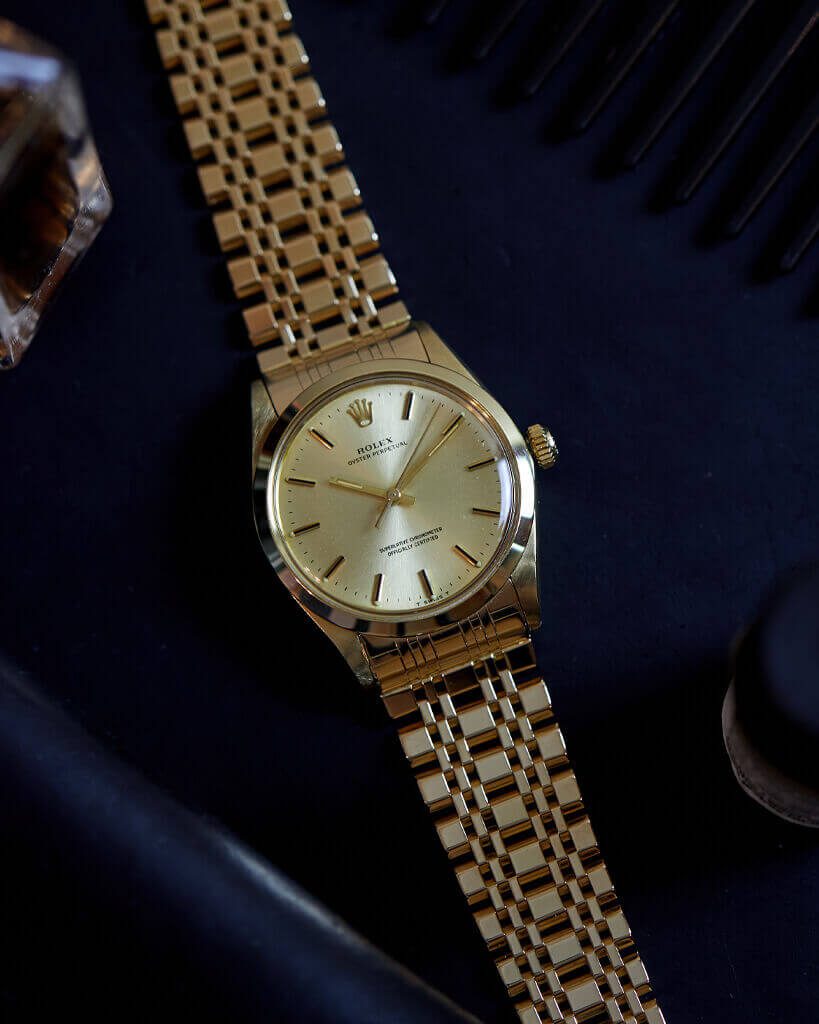
Where to buy vintage watches
The internet makes researching vintage watches much easier than ever it once was. In fact it’s hard to imagine a time when you could not just sit down and do the bulk of your research in the comfort of your favourite chair. However, nothing negates the need for a reputable vintage watch dealer whom you can trust. In the vintage watch industry, there is a common saying: “Buy the seller before you buy the watch”. We cannot emphasise this enough.
A vintage watch dealer should have your best interests at heart, be 100% transparent, be happy to give advice and be trusted and reputable within the industry.
You can start by making a visit to a few vintage watch dealers. Ask questions, such as “What’s included in your after-sales service?”, “How long are the warranties?” and “What do you specialise in?”
A good vintage watch dealer should have a solid after-sales service and will include a 12-month warranty with all sales. Buying “as seen” is a serious red flag, telling you not to buy.
If you have experience with auction houses, then you may be lucky to find a rare gem of a watch. Remember that in a bidding situation, the final price is likely to get pushed beyond its market value. If you’re new to auction houses and vintage watches, then we recommend sticking with a reputable vintage watch dealer, whose knowledge and skills are worth their weight in vintage watch gold.
Watches we recommend
Here are three vintage watches, as recommended by Vintage Gold Watches, that would make great initial investments between £3,000 and £7,000. These have general market appeal and therefore are highly collectable:
£3,000 – £5,000
The Omega Cal.30 T2 in pink gold with a hand-wound movement is an elegant example of 40s design and production. A great initial investment piece that won’t break the bank and is time-proven to hold its value and steadily increase.
£4,800 – £7000 for a watch with a leather strap / £6,000 – £12,000 for a watch with a gold bracelet.
A Rolex Oyster Perpetual in steel or gold, from the mid 50s to mid 60s is one of the safest investments you can make. It’s pretty much guaranteed to gain value, as it has great market appeal and continues to be held in high esteem by collectors and investors alike.
£2,950 – £5,500
The Omega Seamaster Automatic from the mid 50s to mid 60s makes a great first time investment piece. They have been highly sought after for decades and will continue to be so thanks to their place in watchmaking history and the vintage market’s love of ‘tool’ watches – which continue to be the top picks among collectors.
To stay in the loop with the vintage watch industry sign up to our regular email newsletter with news, features and more, straight to your inbox.



